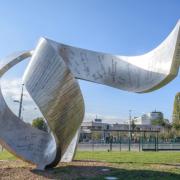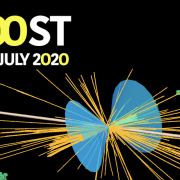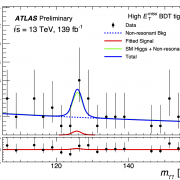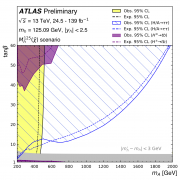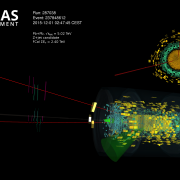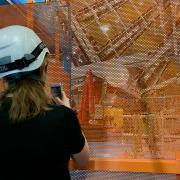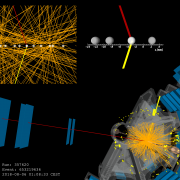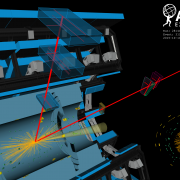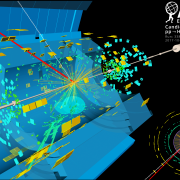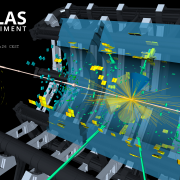Access to Collaboration Site and Physics Results
Updates tagged: “new physics”

ATLAS uses the Higgs boson as a tool to search for Dark Matter
One of the great unexplained mysteries is the nature of dark matter. So far, its existence has only been established through gravitational effects observed in space; no dark-matter particles with the needed properties have (yet) been detected. Could the Higgs boson be the key to their discovery?
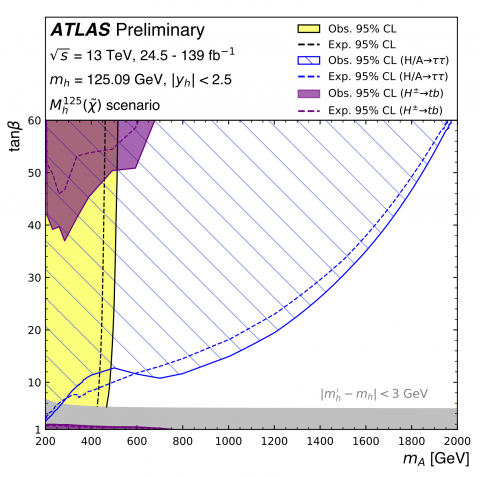
Higgs boson probes for new phenomena
ATLAS scientists are implementing a new strategy in the search for physics beyond the Standard Model – one that combines measurements across the full spectrum of the Collaboration's research programme.
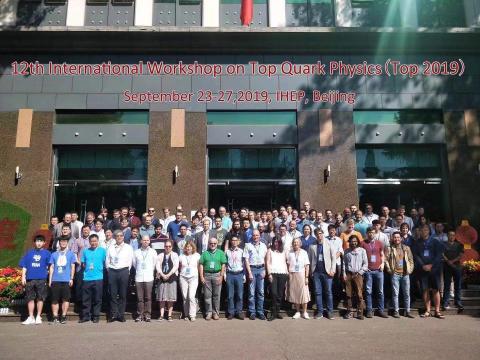
ATLAS highlights from TOP2019
As the heaviest elementary particle, the top quark is appropriately named. It is ideally suited for precision measurements that test the limits of our understanding and could provide indirect hints at new physics. Physicists from around the world gathered in Beijing, China, last week at the annual TOP2019 conference to exchange the latest news, results and ideas on the top quark. For the ATLAS collaboration, TOP2019 proved a great success, with several excellent talks and posters presented by its members.
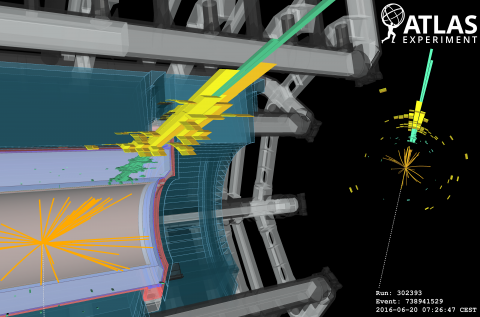
Searching for Dark Matter with the ATLAS detector
When we look around us, at all the things we can touch and see – all of this is visible matter. And yet, this makes up less than 5% of the universe.

First ATLAS result with full Run 2 dataset: a search for new heavy particles
Could a Grand Unified Theory resolve the remaining mysteries of the Standard Model? If verified, it would provide an elegant description of the unification of SM forces at very high energies, and might even explain the existence of dark matter and neutrino masses. ATLAS physicists are searching for evidence of new heavy particles predicted by such theories, including a neutral Z’ gauge boson.
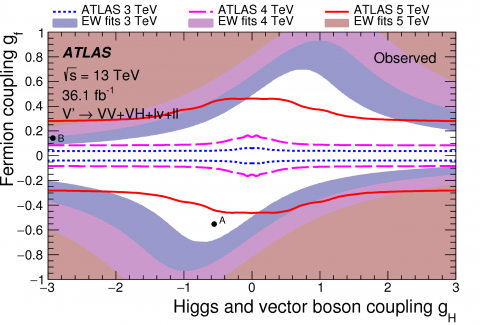
Stronger together: combining searches for new heavy resonances
While the Standard Model has proven tremendously successful, much experimental evidence points to it not being a complete description of our universe. The search for “new physics” is therefore an important component of the ATLAS experimental programme, where a number of analyses are looking for signs of new heavy particles decaying to different final states. Though these searches have not yet found a significant signal, they have allowed physicists to place stringent constraints on different new physics scenarios. These can be further tightened by combining different analysis channels and approaches.

Catching hadronic vector boson decays with a finer net
Many theoretical models predict that new physics, which could provide answers to these questions, could manifest itself as yet-undiscovered massive particles. These include massive new particles that would decay to much lighter high-momentum electroweak bosons (W and Z). These in turn decay, and the most common signature would be pairs of highly collimated bundles of particles, known as jets.
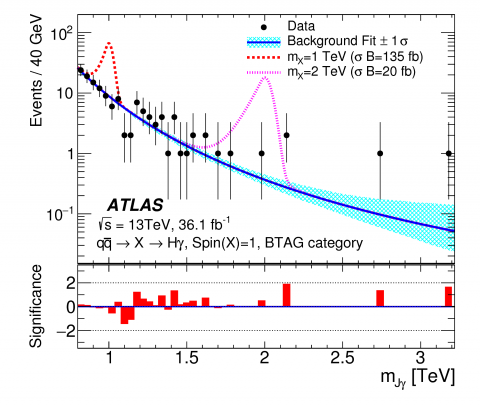
Searching for forces beyond the Standard Model
The ATLAS collaboration is continuing to scour the wealth of data provided by the LHC for any signs of physics beyond the particles and interactions described by the Standard Model. One approach is to search for new forces in addition to the Standard Model’s electroweak and strong interactions. Such forces could be propagated by new massive bosons playing the role the W and Z bosons have in mediating the electroweak force.
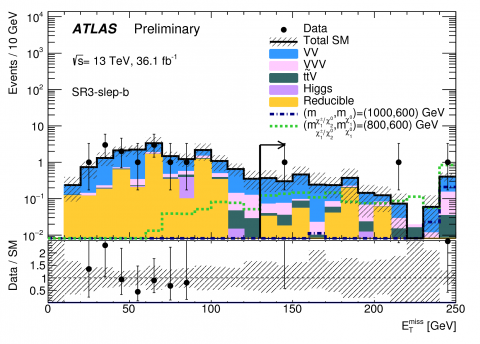
ATLAS releases new results in search for weakly-interacting supersymmetric particles
Supersymmetry is an extension to the Standard Model that may explain the origin of dark matter and pave the way to a grand unified theory of nature. For each particle of the Standard Model, supersymmetry introduces an exotic new “super-partner,” which may be produced in proton-proton collisions. Searching for these particles is currently one of the top priorities of the LHC physics program. A discovery would transform our understanding of the building blocks of matter and the fundamental forces, leading to a paradigm shift in physics similar to when Einstein’s relativity superseded classical Newtonian physics in the early 20th century.
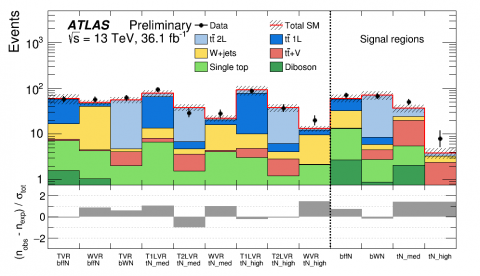
Hunting for the superpartner of the top quark
Supersymmetry (SUSY) is one of the most attractive theories extending the Standard Model of particle physics. SUSY would provide a solution to several of the Standard Model’s unanswered questions, by more than doubling the number of elementary particles, giving each fermion a bosonic partner and vice versa. In many SUSY models the lightest supersymmetric particle (LSP) constitutes dark matter.


